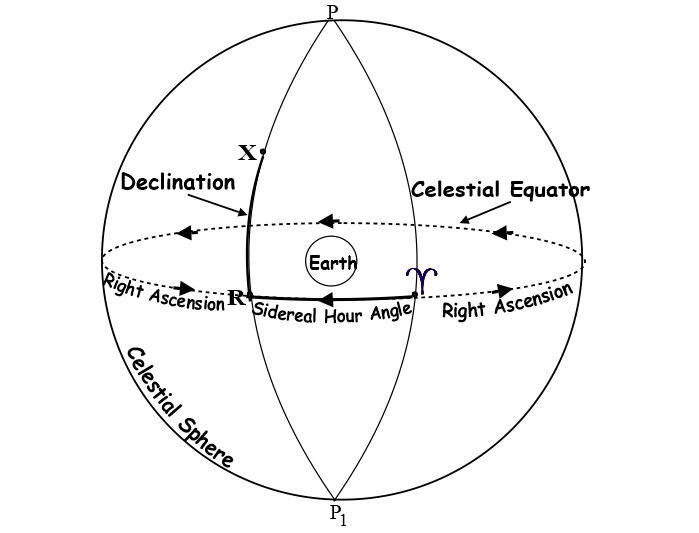Planck E PressCenter Articles
Relating Angles to Hours
Date published: 2023-02-13
Date modified: 2023-02-13
Reading time: 00:01:03

“I am amazing. Everyone knows it.”
Narcissus
If we're ever going to master the physics that allows us to calculate star temperatures, we need to understand the sky. For starters, the Earth moves beyond rotation and revolution. For example, nutation and precession of the equinoxes. Since the planet has an axis tilt of about 23.5 degrees, the precessional motion is determined by the tilt of the axis relative to the plane of its ecliptic, and one spin takes 25770 years to complete.
To create a system of interrelationships between planets and stars, we divide the celestial dome into two hemispheres separated by the equator. The stars in the northern hemisphere have positive declinations, while those in the southern hemisphere have negative declinations. Thus, the North Star, which at this moment is exactly aligned with the North Pole of the Earth, has a declination of +900.
As we know, the largest circumference of the earth is measured at the equator. By analogy, we assume that the positions observed from the celestial equator are known as right ascension, whose zero point is the moment when the Sun crosses the celestial equator, at the beginning of spring, a phenomenon called the spring equinox.
Finally, we come to units of measurement.
On Earth, when we use angles in our calculations of longitude and latitude, the celestial measurements are made in hours, minutes, and seconds. Therefore, the degrees of the angles correspond to the Earth's rotation time. That is, the planet rotates on itself in 24 hours, completing 360 degrees.
And then things get simpler. One hour equals 15 degrees; 1 minute (or 15 degrees divided by 60) equals 15" (or fifteen arcseconds). For example, the star Alpha Ophiuchi, in the constellation of Ophiuchus, is located at 17h34m56s, with a declination of +12° 33′ 38.1.″
Recent Presscenter Articles
-
The Parametrization of Science
-
A Scientific Impossibility
-
The Unsustainable Stability of the Atom
-
The Bell-Curve and the Neutron
Planck E - Books
For further information about Planck E PressCenter, please contact us.
Divulging ingenious solutions
The mission of the Planck E PressCenter is to promote ideas, products and theories that have not yet reached the mainstream, as captured in our first release Eccentrics and their Ingenious Solutions.
Newsletter
Sign up for our weekly Planck E Newsletter, complete with the latest ingenious solutions.
Click here for the signup form.
Submit your ingenious solution
We encourage you to submit your ingenious solution, article, press release or "out of the mainstream" technical idea for publication on the Planck E PressCenter. Please send us an e-mail to presscenter@planck-e.com and enquire how.
To learn more about holistic engineering, solutions inspired by nature, monetization of diseconomies, training courses or the incorporation of Being Data to your day-to-day, please follow us on the social networks.



